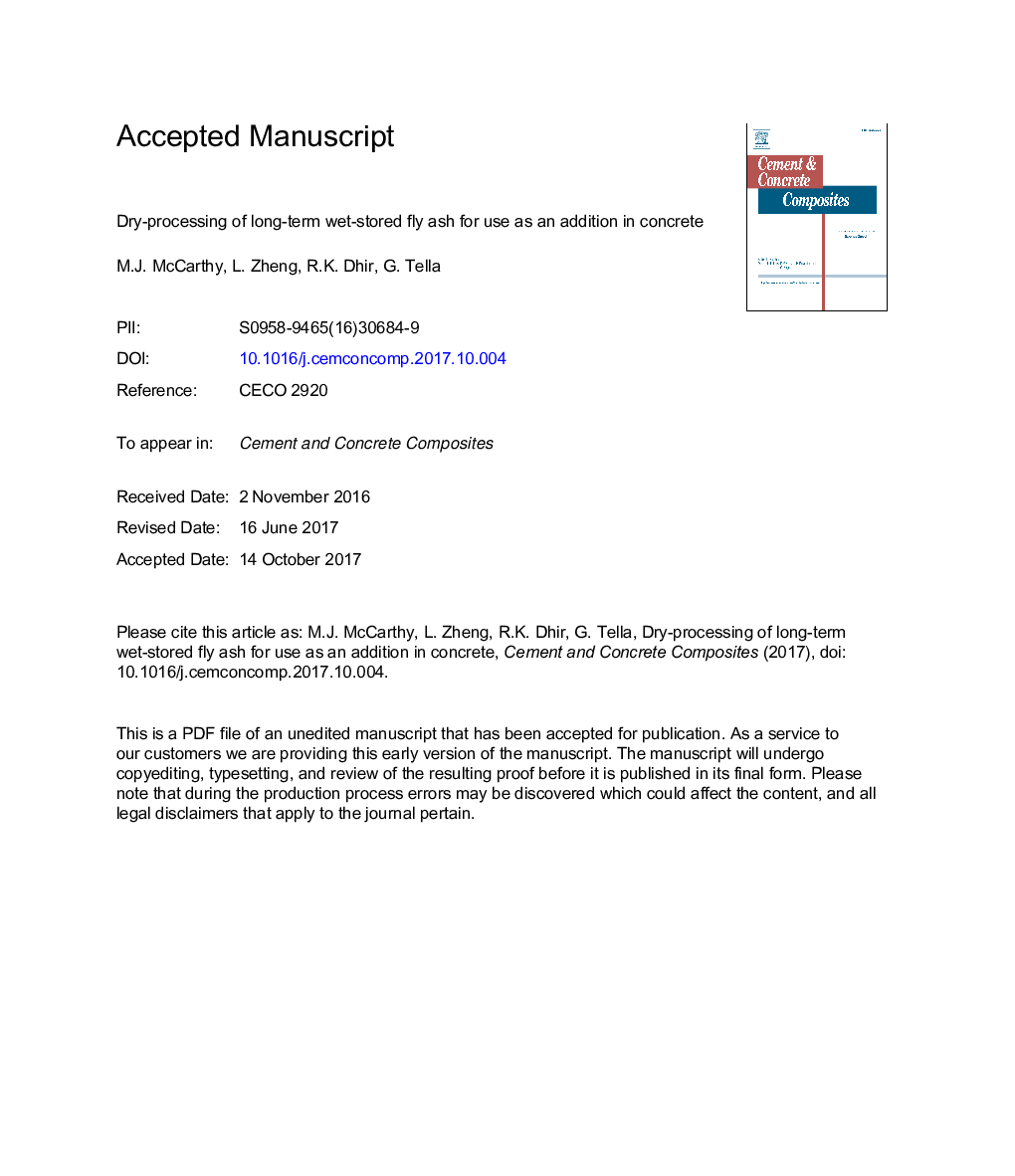| Article ID | Journal | Published Year | Pages | File Type |
|---|---|---|---|---|
| 7883635 | Cement and Concrete Composites | 2018 | 36 Pages |
Abstract
The paper describes a study carried out to explore the potential for recovery of fly ash from wet-storage areas for use as an addition in concrete, and involved drying and processing material to achieve finer fractions/reduce particle size. Three relatively coarse fly ashes with medium/high carbon contents (loss-on-ignition; LOI) were obtained from two UK lagoons and a stockpile. Initially, drying (105â¯Â°C) and screening (600â¯Î¼m) were carried out, giving acceptable handling properties. Thereafter, processing using (63â¯Î¼m) sieving, air classifying or grinding was investigated. The methods gave increased fineness levels (greatest with grinding), with some reductions in LOI also found after sieving and air classifying. Assessment of fly ash reactivity indicated improvements with processing, and most noticeable effects by grinding. Tests on concrete found that both consistence (slump) and compressive (cube) strength increased with processing and tended to follow fly ash fineness. Further analysis showed that strength could be related to the sub 10â¯Î¼m particle level in fly ash. This appeared to be irrespective of processing method, with progressive increases (in strength) up to sub 10â¯Î¼m contents of about 60% (maximum in the study). Concrete tests for water absorption and intrinsic (air) permeability, carbonation and chloride diffusion showed that these were also influenced by fly ash sub 10â¯Î¼m content. The factors affecting behaviour are discussed and practical implications of the research considered.
Keywords
Related Topics
Physical Sciences and Engineering
Engineering
Industrial and Manufacturing Engineering
Authors
M.J. McCarthy, L. Zheng, R.K. Dhir, G. Tella,
